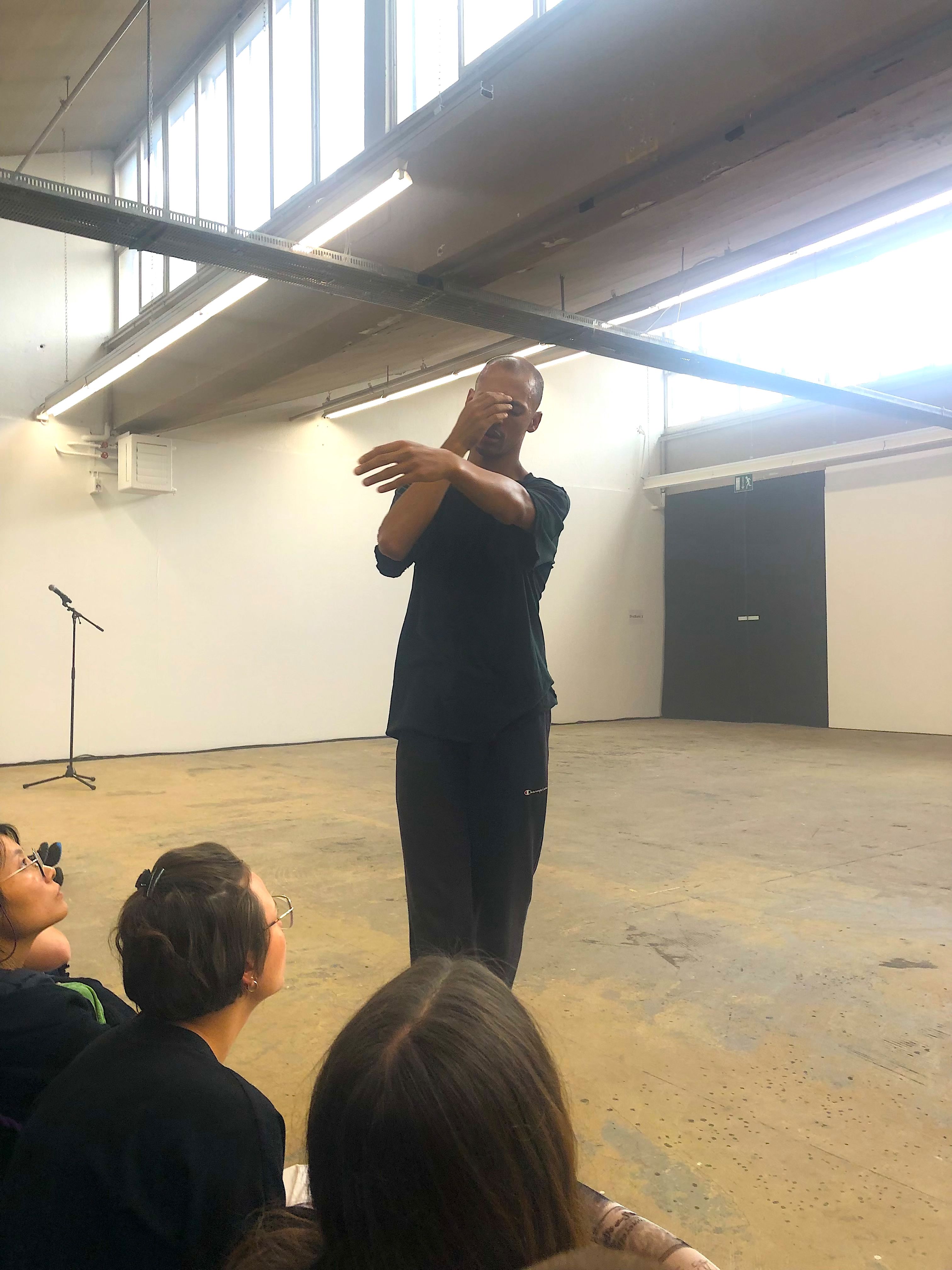Choreographies That Keep Stories
Ileana Ramirez

I recently received the news about the call for submissions for the Swiss Performance Art Award 2024. Artists and collectives associated with performance art by educational background, creative method, or presentational practice are welcome to enter this national competition. This made me remember the last edition at the Kunsthaus Baselland that took place in September 2023, and I was able to attend. Unfortunately, I arrived late on the opening day and only saw a few performances. I was especially impressed by the performance of Tiran Willemse in "blackmilk" 2023. He won the first prize with Anne Rochat. Willemse is a talented young South African dancer and choreographer living between Zurich and Berlin. His energy filled the room along with the curiosity of the audience as they witnessed a remarkable event. The constant and saturating repetitions of Willemsen's choreographed movements gave the impression that he was in a meditative trance; his agile and light complexion allowed him to move quickly and gracefully throughout the room while different well-known songs were playing, including classical music, rap, and pop, imbuing the room with an atmosphere of tension and melancholy.
During more than an hour of performance, the artist unfolded with gestures, sprints, elastic jumps, and some pas de deuce. His sober and resilient performance held a combination of classical ballet techniques and marching troupes of South African drum majorettes, interspersed with mimes and dramatizations of stories of violence, appealing to an oral history that some communities survive in dance and collective encounters. The presentation continued with iconic rap beats and pop music that the artist followed with an accelerating pace, marching through the room, and surrounding the border between the audience and the stage with a misty and tense feeling that took us on a journey through time. He clearly showed magnificent skills as a ballet dancer; his contemporary movements and athletic energy are admirable. Furthermore, his thin hands moved as if he were trying to reveal secrets hidden in the air, or perhaps as if he were drawing birds trying to fly.

The staging of "blackmilk" 2023 reminds me of the traditional celebrations in the villages, where the body moves faster as the music intensifies the tension. Back in South America, during religious festivals in the towns or when a saint is to be gilded, the procession follows a rhythmic drum that accompanies the rhythmic movements of the parishioners. The energy between the people is present, as if they were a spiritually ordered caravan. At some point, I thought about the tradition of Andean dance, another South American dancing tradition where the dance could be a metaphor to symbolize and narrate an oral history that, in the end, would feast either with solemnity or joy the memories of a community. Román Robles Mendoza states in his paper, Collective Memory through Dances, 2012: "Current Andean dances are, fundamentally, arts that express the memory of their events, permanent memories of events, and events of deep social content that occurred at some point in their past. Their origin, construction, and permanent reproduction recreate these values in successive generations to prevent them from being forgotten because they constitute part of their lives and social history. They have greater strength and coherence in rural societies as a strategy for preserving collective memory. These represent the re-reading of important events from the past, similar to practical lessons, so that successive generations keep a symbolic memory of what happened, why it happened, and how it happened”.[1]

Willemse was so involved and focused on his process that he did not establish contact with the audience until the end of his presentation. As he raised his head and looked around, he started to call the mesmerized audience, one by one, to join him and wait in the next room. It seems that all we embarked on with him was to experience his movements, his pain, and the memories he carries within the narratives he tries to reveal throughout his performance.
The choreography tells stories of violence, war, life, and death, but with new styles in a discipline like dance that no longer separates who can move in one way or another. Willemse emptied the chairs of the audience and the room, creating a parallel and confusing situation, twisting the typical logic of a performance that ends when the audience begins to applaud as an automatic reaction trying to wake up. Rather, he continued dragging people to his side, to the stage, so that the procession was complete. We were all immersed in the performance from collective memory, an imagery that sustains the cultural and historical representation of a community in the images of non-linear stories of previous experiences. Dancing implies weaving together what we yearn, and what we can not forget in movements and rhythms, that offer a promise of resistance to oblivion.
Ileana Ramírez Romero
@traficovisua
February 2024
[1]La memoria colectivaa través de las danzasRomán Robles Mendoza. Universidad Nacional Mayor de San Marcos. 141 Investigaciones sociales Vol.16 N°29, pp.141-158 [2012]UNMSM-IIHS. LIMA, PERÚ file:///Users/ileanaramirez/Downloads/admOjs,+7741-26952-1-CE-1.pdf